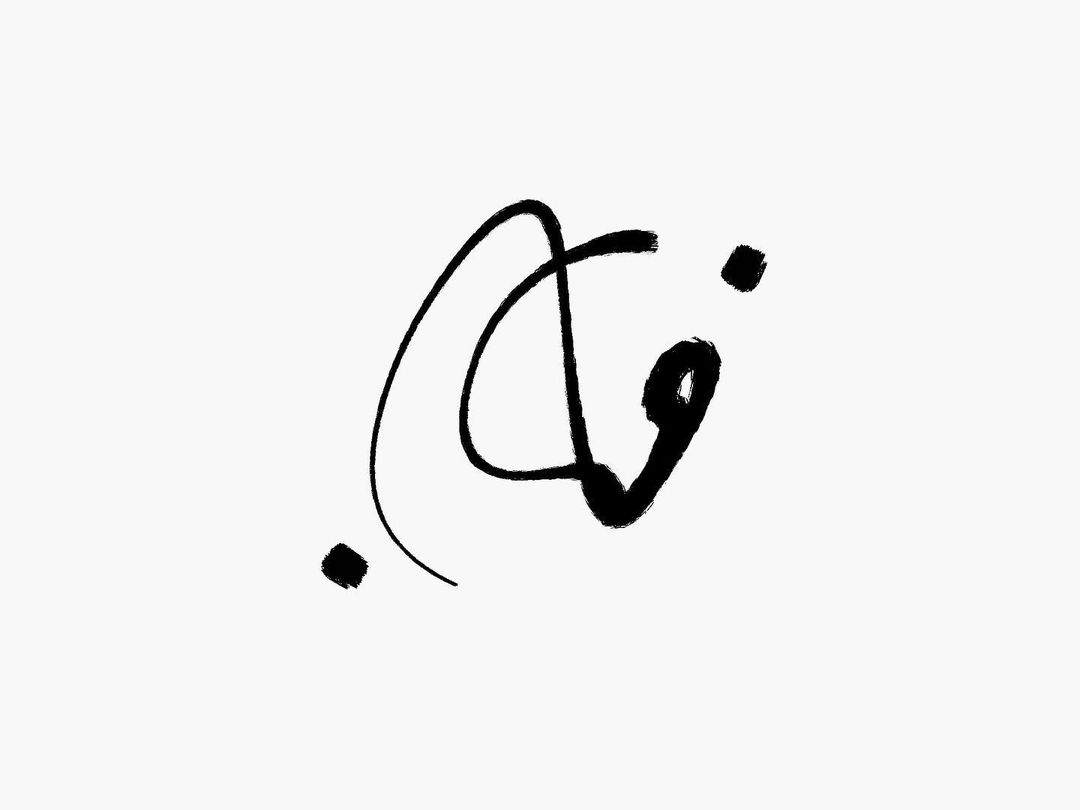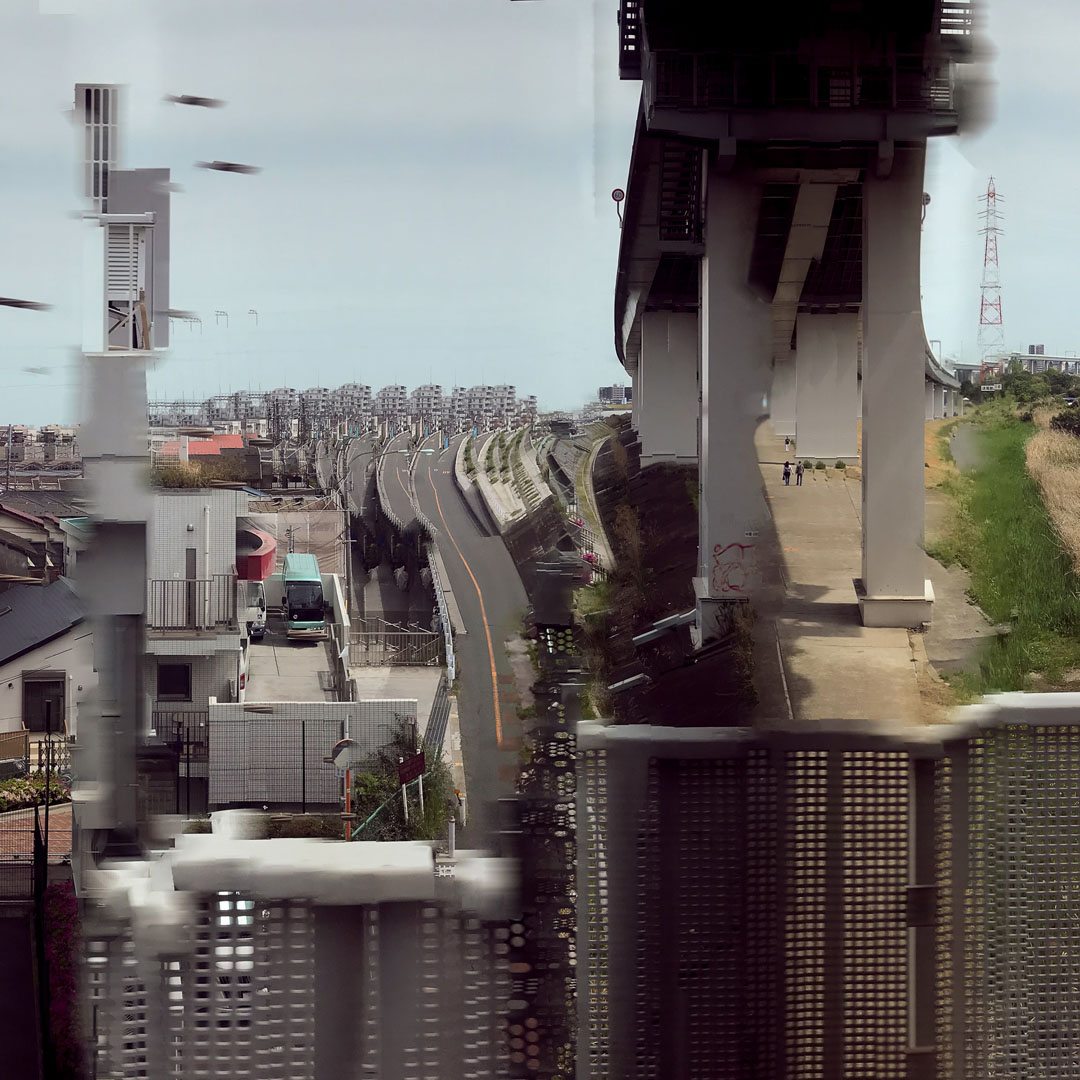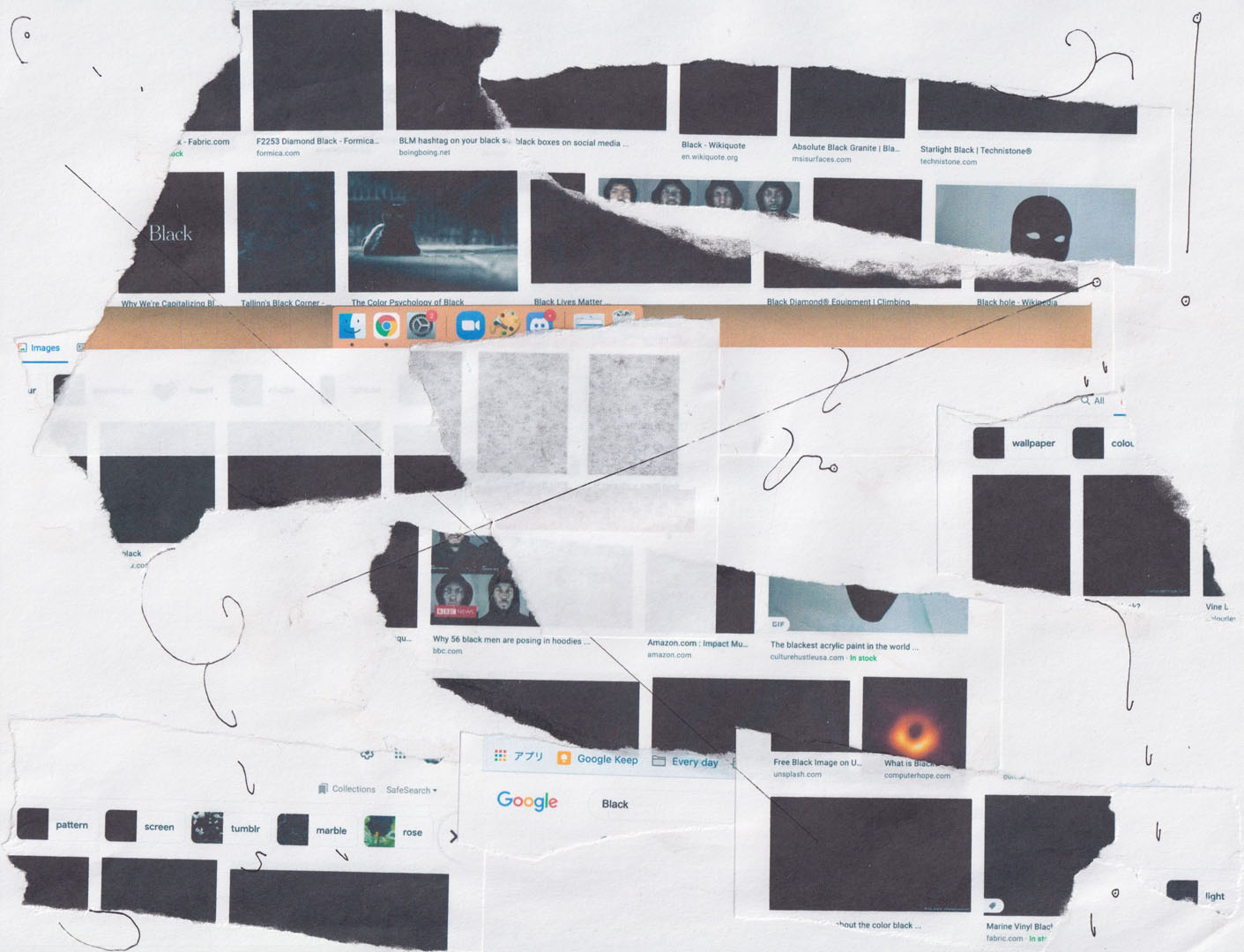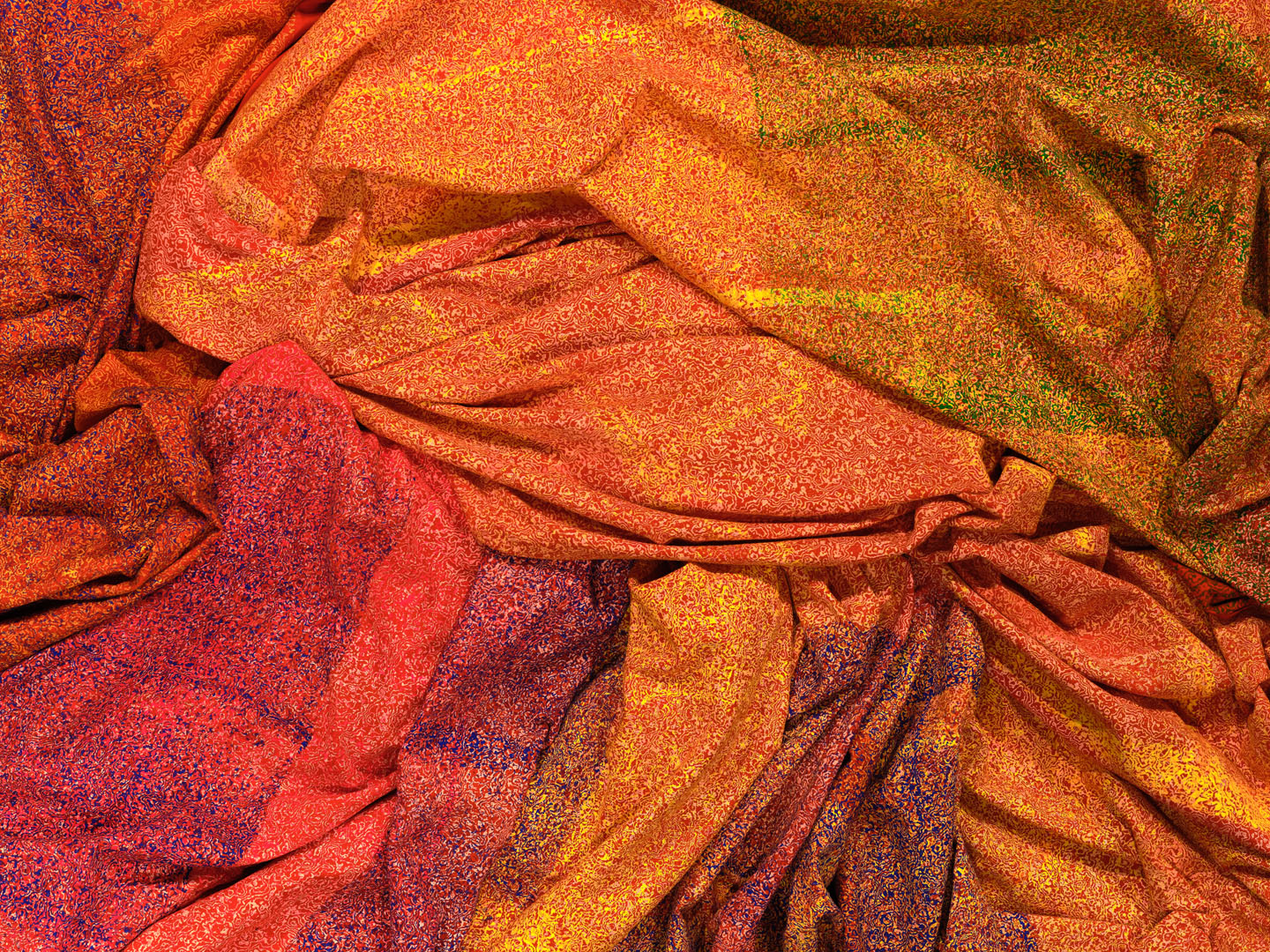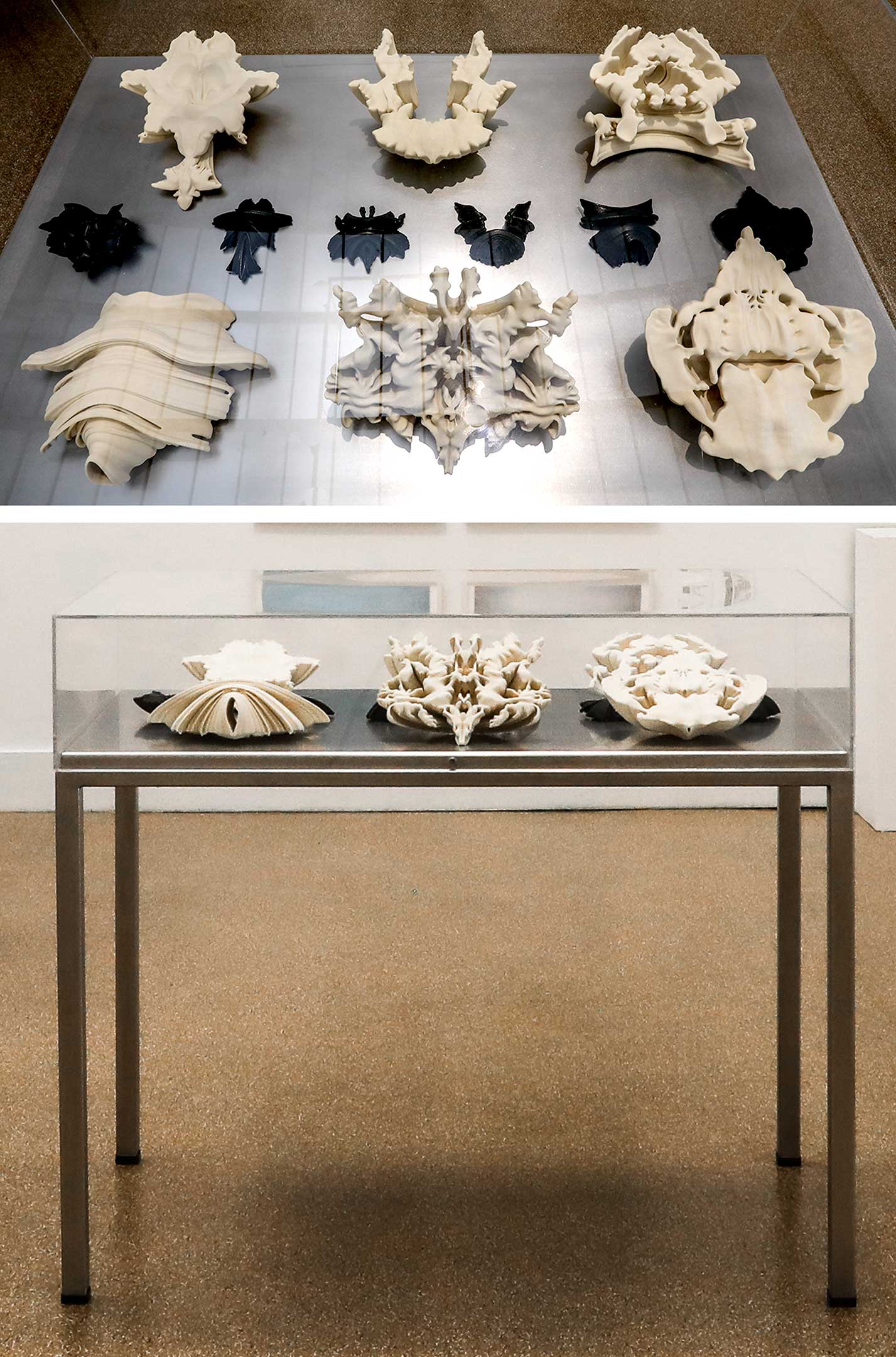
Suzanne Anker, Rorschach Series, 2004-05. Rapid Prototype Sculptures. Plaster and resin, bronze.
As symmetrical structures of random forms, my interest in Rorschach tests are based on converting these images into sculptural objects. Using three-dimensional modeling software, Maya, the inkblot itself is turned into numerical code. Numbers are transformed into 3-D forms and 3-D forms are decipherable as numerical code. Looking like bones, archaic sea creatures, body parts, etc., the sculptures become surrogates for the imagination itself, opening up dialogues between mind and body. In this work, the mind is literally embodied. These sculptural forms are computer generated objects,constructed one layer at a time, much the way a sedimentary rock comes into existence through the deposition of silt. Although many forms appear random or irregular, their geometry can be mapped by advanced computer software programs.
Suzanne Anker is a Bio Art pioneer, visual artist, and theorist working at the intersection of art and the biological sciences. Her practice investigates the ways in which nature is being altered in the 21st century. Concerned with genetics, climate change, species extinction, and toxic degradation, she calls attention to the beauty of life and the “necessity for enlightened thinking about nature’s ‘tangled bank’.” She works in a variety of mediums ranging from digital sculpture, photography, and plants grown by LED lights.
Read this artist’s catalog essay here.


